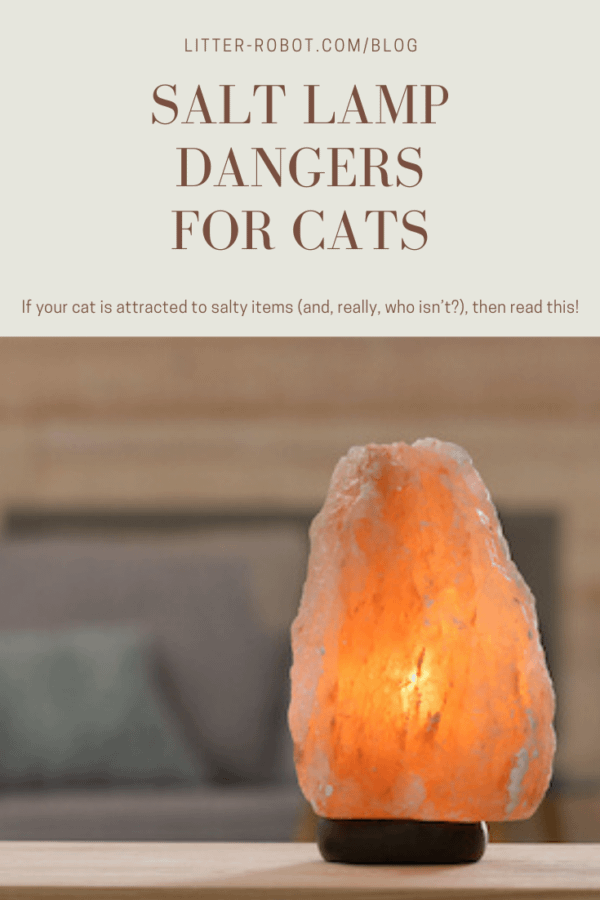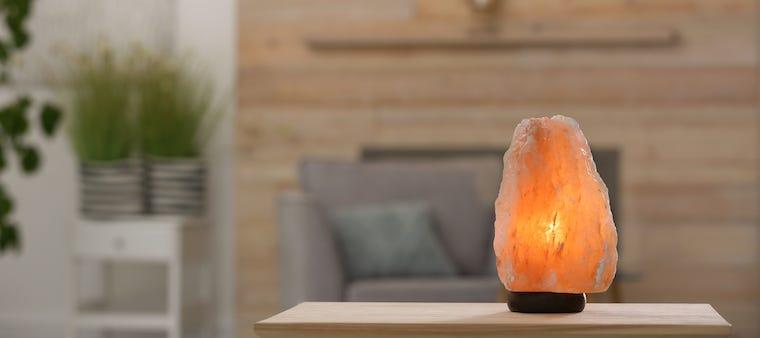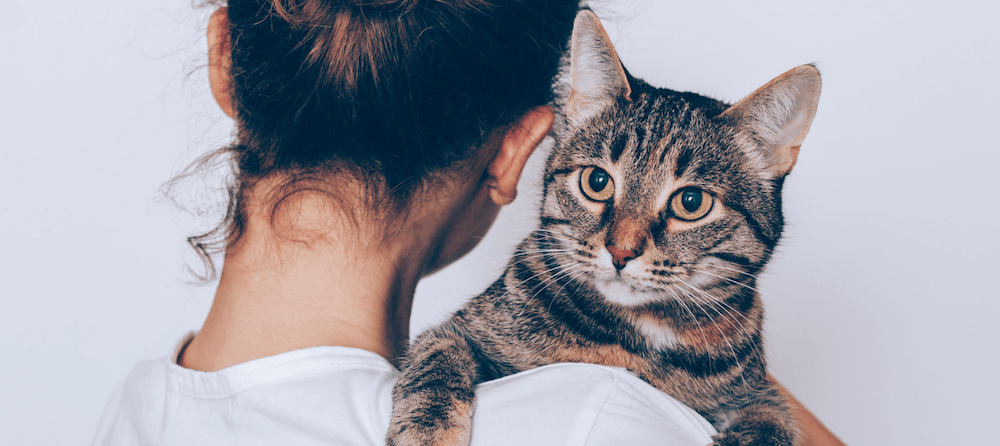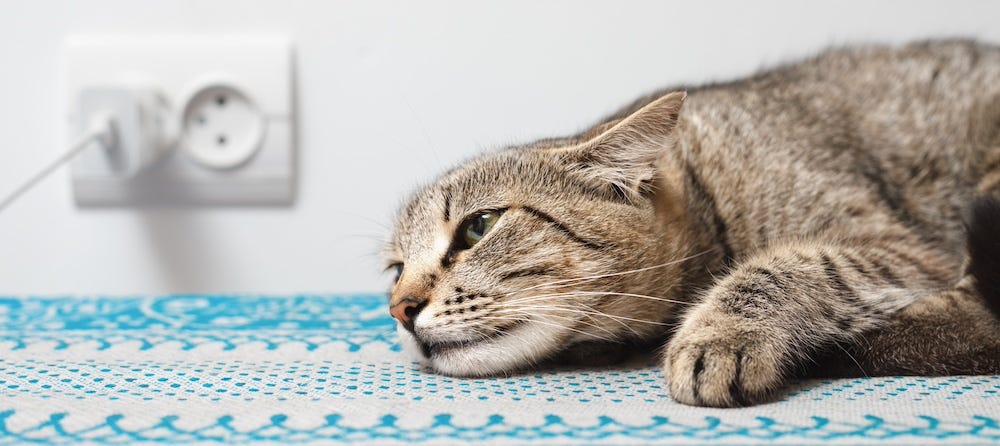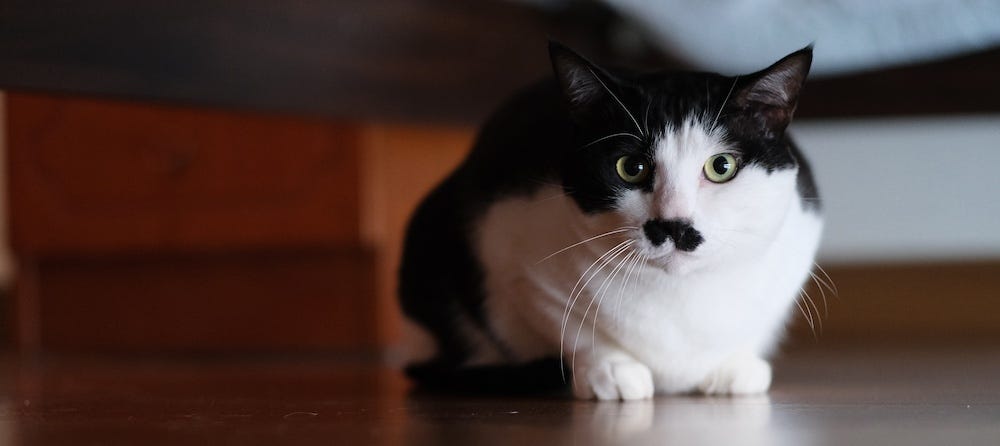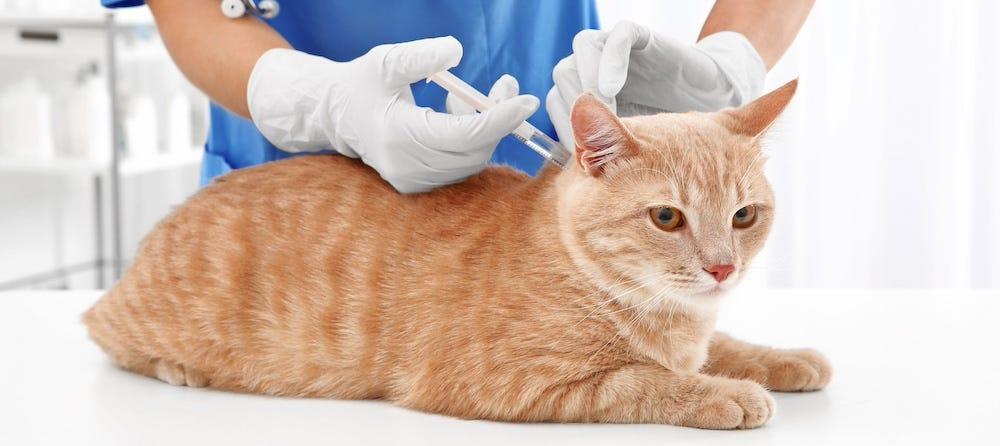In recent years, Himalayan salt lamps have become a popular gift—both as a trendy piece of home décor and for supposed health benefits. In homes with cats and dogs, however, salt lamp dangers are real. Are salt lamps toxic for our pets? If your cat is attracted to salty items (and, really, who isn’t?), then read on.
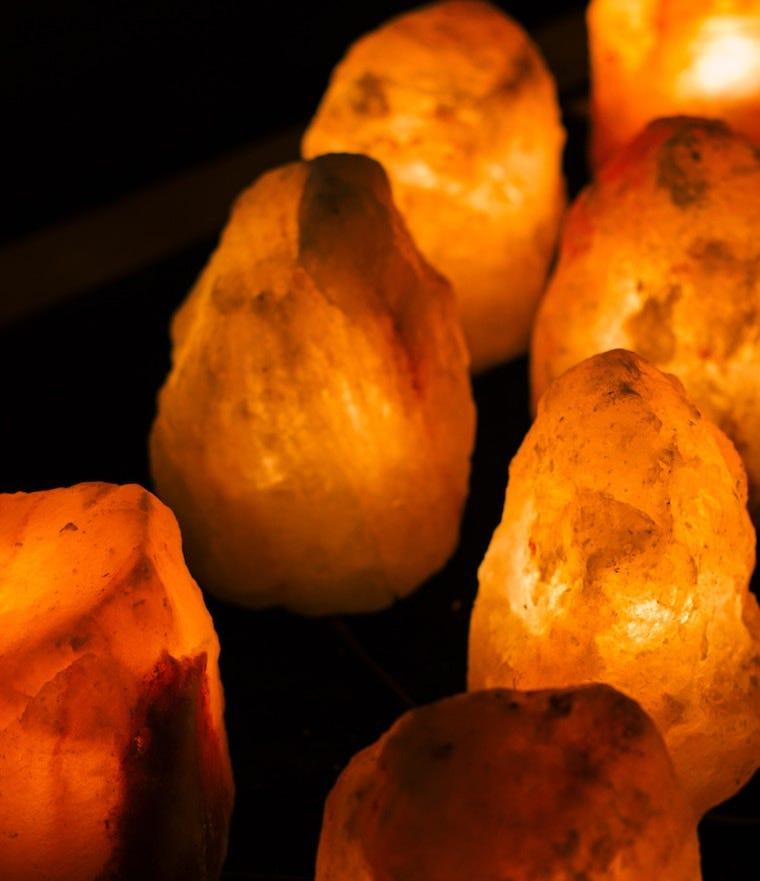
What are salt lamps?
Salt lamps are decorative lights carved out of pink Himalayan salt. Some people claim that salt lamps also offer health benefits because they are “natural ionizers,” meaning they change the electrical charge of the circulating air (Healthline). However, there is little to no medical evidence to support these claims.
The root of the issue: Is salt bad for cats?
A little salt goes a long for small pets such as cats. Some clinical veterinary reports caution that as little as a quarter teaspoon of salt consumption can be toxic to cats that weigh 10 pounds or less; cats weighing more than 10 pounds may experience symptoms of poisoning after a half a tablespoon of salt.
Symptoms of salt poisoning in cats
According to Pet Poison Helpline, the following symptoms may occur if your cat consumes too much salt:
- Vomiting
- Diarrhea
- Decreased appetite
- Lethargy
- Incoordination
- Excessive thirst or urination
- Tremors
- Seizures
- Coma
Salt lamp dangers for cats
It’s not difficult to see why salt lamp dangers might arise if you have a small pet in the house—especially a cat that can likely jump to any spot where you’d display the lamp.
Dr. Karen Follett of the Thomas J. O'Connor’s Animal Control and Adoption Center in Massachusetts explained salt lamp dangers like this: “One lick won’t kill [cats] but it’s kind of like us with potato chips. They like the salt so they’ll keep going back for more and more.”
If you own a salt lamp and notice any of the above symptoms in your cat, offer your cat fresh water immediately. If your cat doesn’t drink (or if he drinks very little), get to a vet or emergency clinic right away. When caught early enough, salt poisoning in cats is usually treatable through administering intravenous (IV) fluids, monitoring electrolytes, treatment for brain swelling and dehydration, and other supportive care (Pet Poison Helpline).
Other salty sources of potential danger

Aside from salt lamps, keep in mind that your pets could get into other salty sources of danger:
- Table salt
- Baking soda
- Homemade play dough
- Salt dough ornaments and crafts
- De-icing salt (such as salt rocks)
- Enemas containing sodium phosphate
- Saltwater aquarium tanks
- Paintballs
Is salt bad for cats? Except in miniscule amounts, salt is indeed toxic to small pets. Please be wary of leaving out your salt lamp, table salt, or other potentially toxic products for your cats to lick or ingest. Salt lamp dangers may seem far-fetched, but the addictive nature of salt is undeniable. After all, who among us hasn’t popped open a bag of potato chips and finished the entire thing in one sitting?
Bottom line: There are plenty of ways to add nice ambience and lighting to your home décor—without sacrificing your pet’s health.
